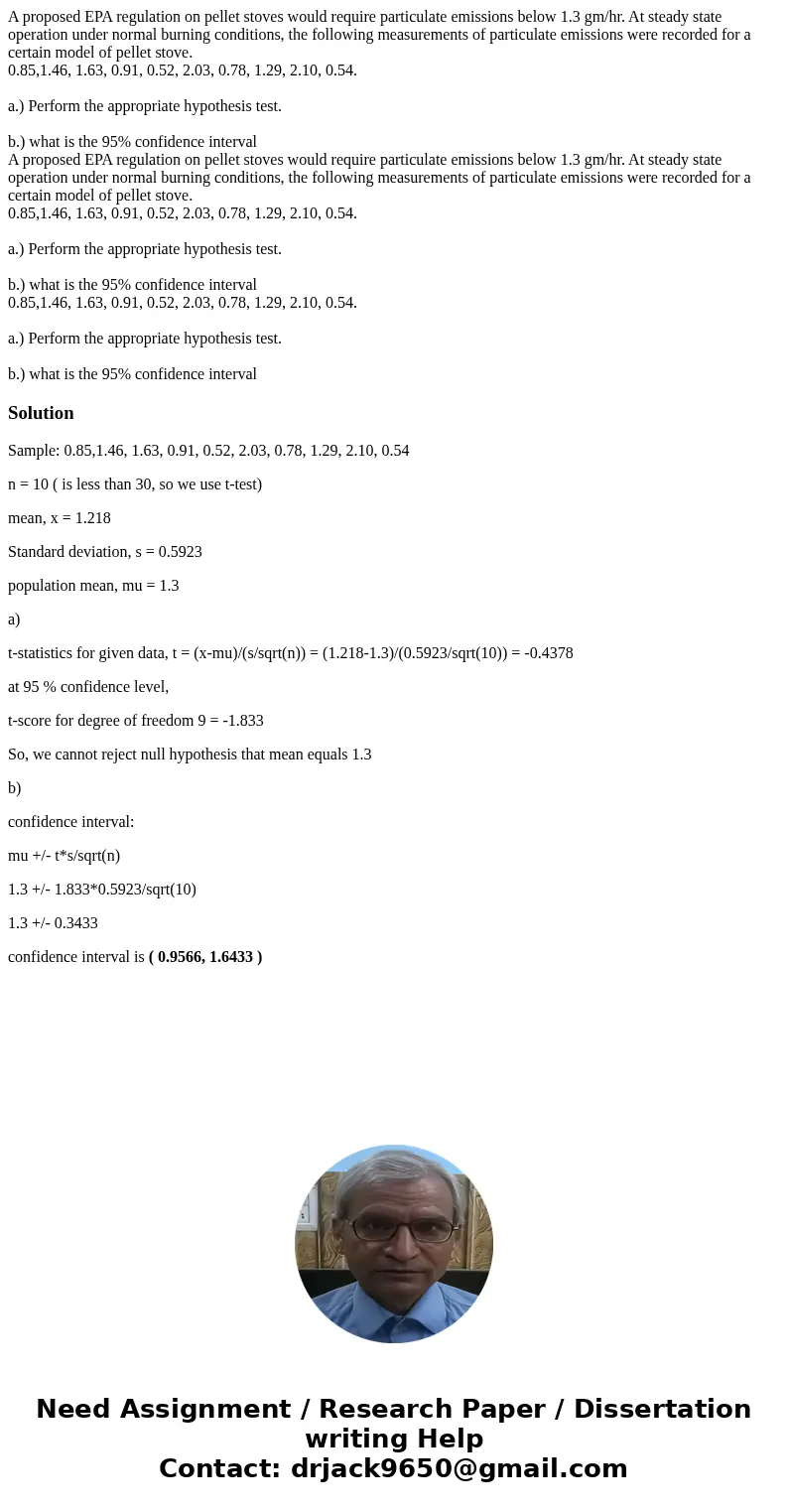A proposed EPA regulation on pellet stoves would require par
A proposed EPA regulation on pellet stoves would require particulate emissions below 1.3 gm/hr. At steady state operation under normal burning conditions, the following measurements of particulate emissions were recorded for a certain model of pellet stove.
0.85,1.46, 1.63, 0.91, 0.52, 2.03, 0.78, 1.29, 2.10, 0.54.
a.) Perform the appropriate hypothesis test.
b.) what is the 95% confidence interval
A proposed EPA regulation on pellet stoves would require particulate emissions below 1.3 gm/hr. At steady state operation under normal burning conditions, the following measurements of particulate emissions were recorded for a certain model of pellet stove.
0.85,1.46, 1.63, 0.91, 0.52, 2.03, 0.78, 1.29, 2.10, 0.54.
a.) Perform the appropriate hypothesis test.
b.) what is the 95% confidence interval
0.85,1.46, 1.63, 0.91, 0.52, 2.03, 0.78, 1.29, 2.10, 0.54.
a.) Perform the appropriate hypothesis test.
b.) what is the 95% confidence interval
Solution
Sample: 0.85,1.46, 1.63, 0.91, 0.52, 2.03, 0.78, 1.29, 2.10, 0.54
n = 10 ( is less than 30, so we use t-test)
mean, x = 1.218
Standard deviation, s = 0.5923
population mean, mu = 1.3
a)
t-statistics for given data, t = (x-mu)/(s/sqrt(n)) = (1.218-1.3)/(0.5923/sqrt(10)) = -0.4378
at 95 % confidence level,
t-score for degree of freedom 9 = -1.833
So, we cannot reject null hypothesis that mean equals 1.3
b)
confidence interval:
mu +/- t*s/sqrt(n)
1.3 +/- 1.833*0.5923/sqrt(10)
1.3 +/- 0.3433
confidence interval is ( 0.9566, 1.6433 )

 Homework Sourse
Homework Sourse